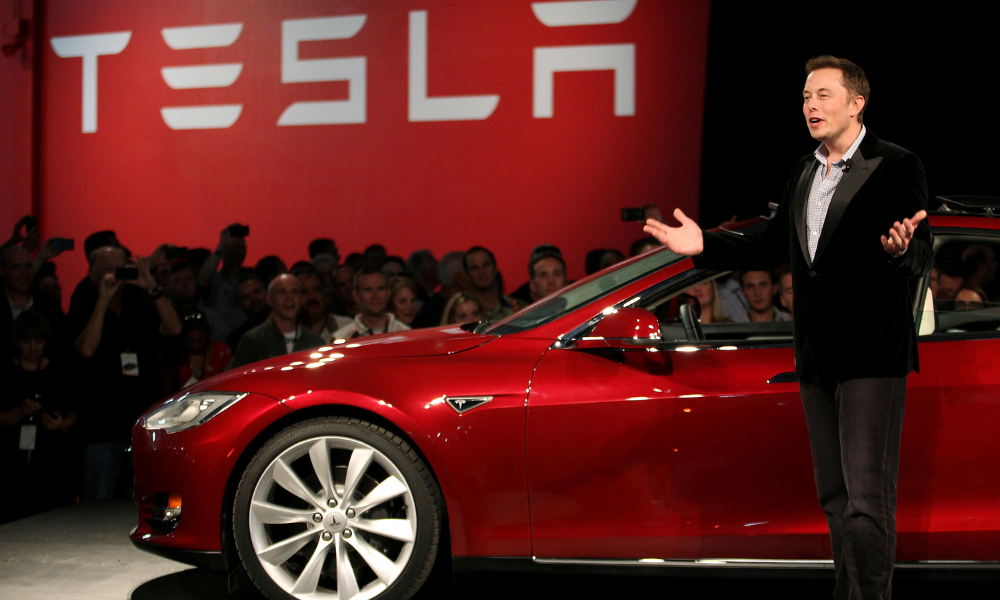
For consumers who have found that costlier insurance is just one of the expenses that make electric cars trickier to love, this is the year when relief may become.
Tesla says its company-backed insurance, now on the market in just five states, may reach 45 by the end of the year. GM, which revived its old GMAC insurance unit as OnStar Insurance in 2020, says it hopes to hit $6 billion in yearly insurance revenue by the decade’s end.
Auto insurance is unlikely to ever be the largest business at either company or even close. But insurance is shaping up as a way that the finance side of automakers’ business can help drive innovation and make adoption easier – as the data generated by the cars themselves are captured to deliver lower insurance prices and, automakers hope, cement customer loyalty.
Wedbush analyst Dan Ives says Tesla could insure 300,000 cars by 2025 “This is a 2024-25 initiative, but they are laying the foundation,” Ives said.
EVs are expensive to insure because their off-the-line speed makes traditional insurers wary, according to CFRA Research analyst Garrett Nelson. And partly because relatively few mechanics know how to fix them, they can be expensive to repair after an accident.
“Tesla is more comfortable with its own vehicles,″ Nelson said. “And they’ve created a trend. GM and others are looking at the same thing.”
EV makers say they are being motivated by the opportunity to close the insurance gap with more data.
The idea is that so much more about the cars are measured – especially as automakers use EVs as testbeds for systems that are building toward fully self-driving vehicles – that insurers have much better data about the risk each driver poses and can use it to contain costs.
At Tesla, the insurance is now available in Florida, Texas, Illinois, Ohio, and California. The company hopes to have its coverage available to 80% of U.S. customers by the end of the year, chief financial officer Zach Kirkhorn said during the company’s latest earnings conference call last month, though state insurance regulations are a factor.
The company boasted about its early success in Texas, where it launched last fall. Kirkhorn said the cars send Tesla so much information about how they are being driven – letting the company send guidance back to drivers – that the real-time feedback results in “quite a bit lower” accident rates.
“If they drive safe, their insurance cost is less, so they drive safer,” chief executive Elon Musk said. “It encourages Tesla Insurance with informatics and real-time feedback encourages safer driving and rewards it monetarily. It’s great.”GM is moving fast, too, and building on its history of offering insurance.
Today, the auto company has a traditional insurance offering in 46 states and Washington, D.C., but it is working on a safe driving behavior algorithm developed jointly with American Family Insurance with the expectation that it can be added to offerings in the insurance market, starting in Arizona, Illinois, and Michigan.
Introductions in those three states will be the start of what a GM spokeswoman said in an email is the company’s “vision to offer a more fair/personalized insurance product to our customers.”
It is working on state regulatory approval for data systems developed by GM and American Family, and the company expects the approvals to be granted in the first half of 2022.
It is launching more quickly in those states because of its work with American Family, but the current product is similar to what you see in-market from other insurers today. GM is the agent, with American Family Insurance underwriting the policies.
One big opportunity is to get insurance clients without adding to the $10 billion yearly spent on U.S. car insurance advertising, said Andrew Rose, president of GM’s OnStar Insurance unit and vice president for insurance innovation. That is more than auto companies spend advertising cars, he said.
| Exposed In 2022 What is the most accurate trading indicator? |
Handling their own insurance, using data generated by the car, will also help GM process claims faster than has been normal in auto insurance. Instead of 18 to 25 days to settle claims, GM thinks it sometimes will know the extent of damage almost immediately and settle up fast.
“In claims, cycle time is money,” he said. “We can know sometimes in seconds. But it may not be time to tell you while the airbag is still deployed.”
While Rose says systems like what GM is developing deliver much more data, traditional insurers have been moving toward telematics for several years using wireless phone apps, according to CFRA insurance analyst Cathy Seifert said, adding that Progressive and Allstate are among the fastest adopters.
At Allstate, more than two million customers are enrolled in telematics programs such as Drivewise and Miles. In states where the plans are approved, 21% of our auto customers are currently enrolled and 35% of new Allstate auto customers choose the plans, said David MacInnis, vice president, telematics & usage-based insurance.
Related Article
Warren Buffett Clears Up Activision Stock Purchase Speculation
US Justice Department Taps New Cryptocurrency Czar
Spotify Reportedly Paid $200 Million
The technology uses phone-based technologies like GPS trails to track braking, speeding over 80 mph, and driving too fast for road conditions, MacInnis said, as well as the time of day clients drive and amount of driving a customer does.
Usage-based car insurer Root went public in late 2020. Insurance upstart Lemonade also began offering usage-based insurance last year.
Both companies have fared poorly as publicly traded stocks after debuting in the red-hot IPO market of the past few years.
GM says car-based systems will be more accurate because the data will come from the car itself, and because the car itself can track factors like seat belt usage that cell phones can’t. Source: CNBC